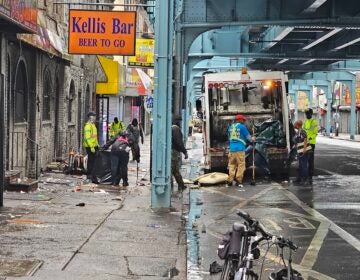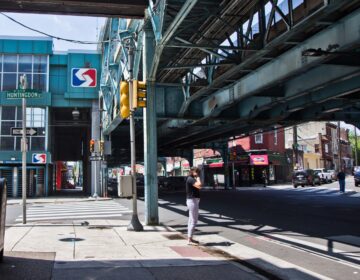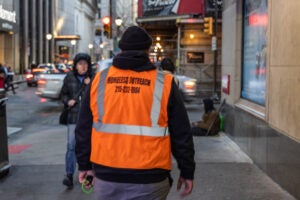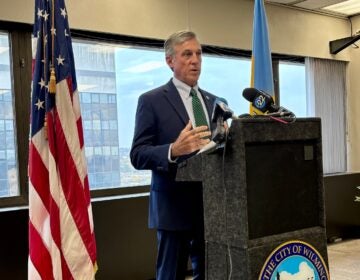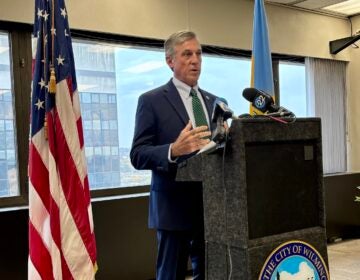Kensington sees clean streets, open sidewalks and a wave of displaced people after encampment clearing
The neighborhood has been the center of at least 10 such sweeps. The move has left some residents and business owners wondering about its long-term efficacy.
Listen 7:11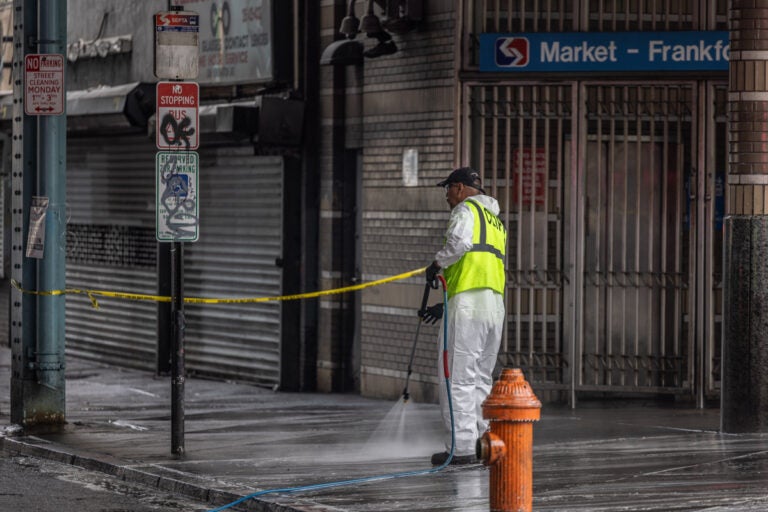
A city worker power washes the sidewalk of Kensington Avenue during the city’s sweep of Kensington Avenue on May 8, 2024. (Kimberly Paynter/WHYY)
From Philly and the Pa. suburbs to South Jersey and Delaware, what would you like WHYY News to cover? Let us know!
It took under an hour for Philadelphia police and city workers to clear sidewalks of tents, structures and people along a two-block stretch of Kensington Avenue early Wednesday morning during a scheduled encampment clearing.
For the next several hours, police closed off the 3000 and 3100 blocks in Kensington to power-wash the sidewalks, sweep the streets and curbs and pick up trash left behind by people who were homeless and living there, or passing through to buy and use drugs.
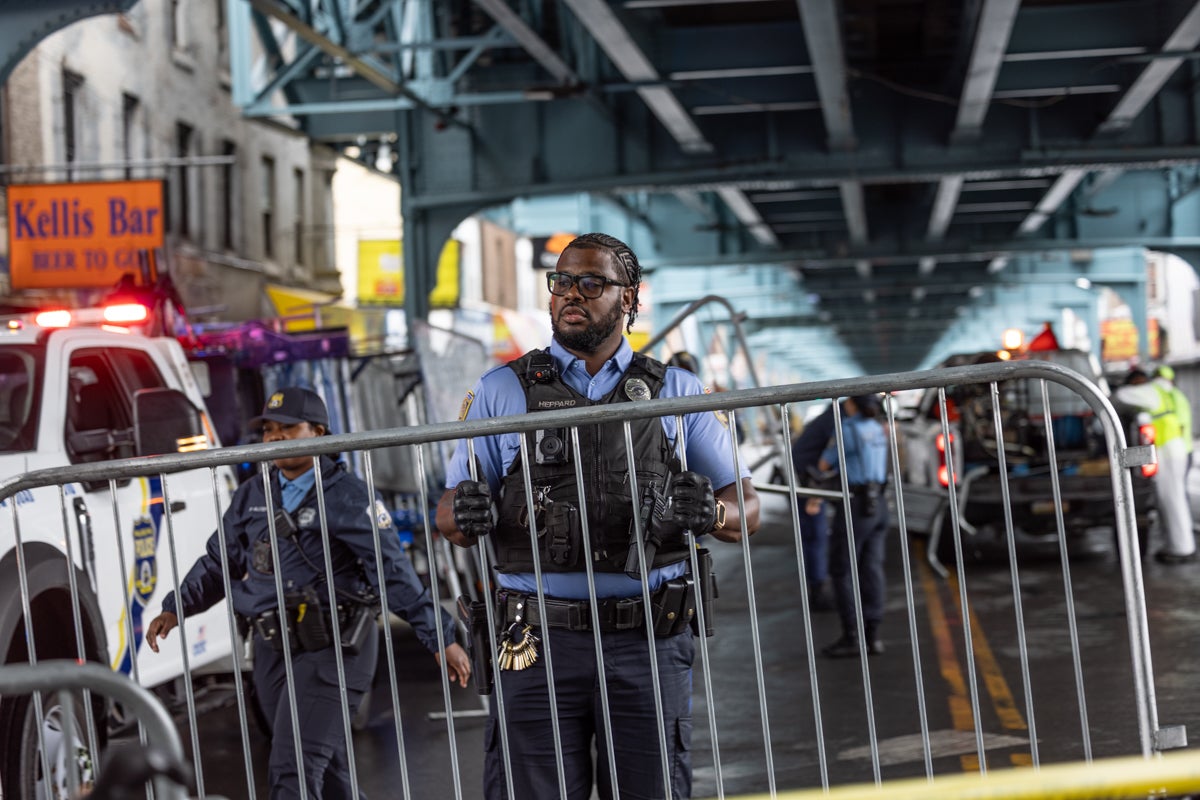
The street running through the heart of the neighborhood’s notorious open-air drug market became quiet after people vacated the area.
Residents and business owners who support efforts to clean and clear the area of open drug use, littering and homeless encampments all had the same question for city leaders: For how long?
“Because it happens now, but it comes back to reality again and we’re back to the same situation,” said Melissa Toledo, whose mother-in-law lives just around the corner.
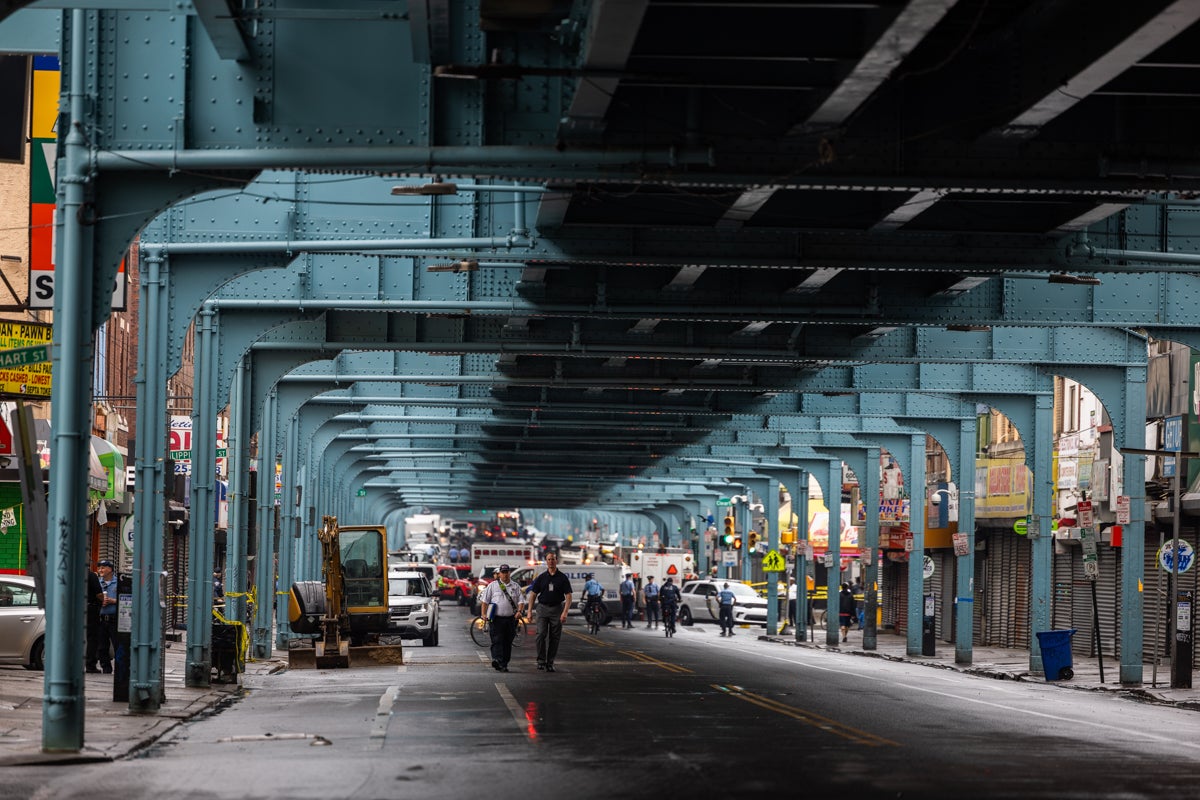
The May 8 clearing is part of Philadelphia Mayor Cherelle Parker’s strategy to address quality of life and public safety issues in the neighborhood. Her plan includes shutting down the open-air drug market and moving people into housing and addiction treatment programs.
But longtime residents like Beverly Tomczak, who is in long-term addiction recovery herself, said moving people out and cleaning the area will be all for nothing if the city doesn’t also address the drug trade.
“They have to get rid of the drug dealers,” she said. “Because if you don’t get rid of the drug dealers, [people] are going to keep coming back.”
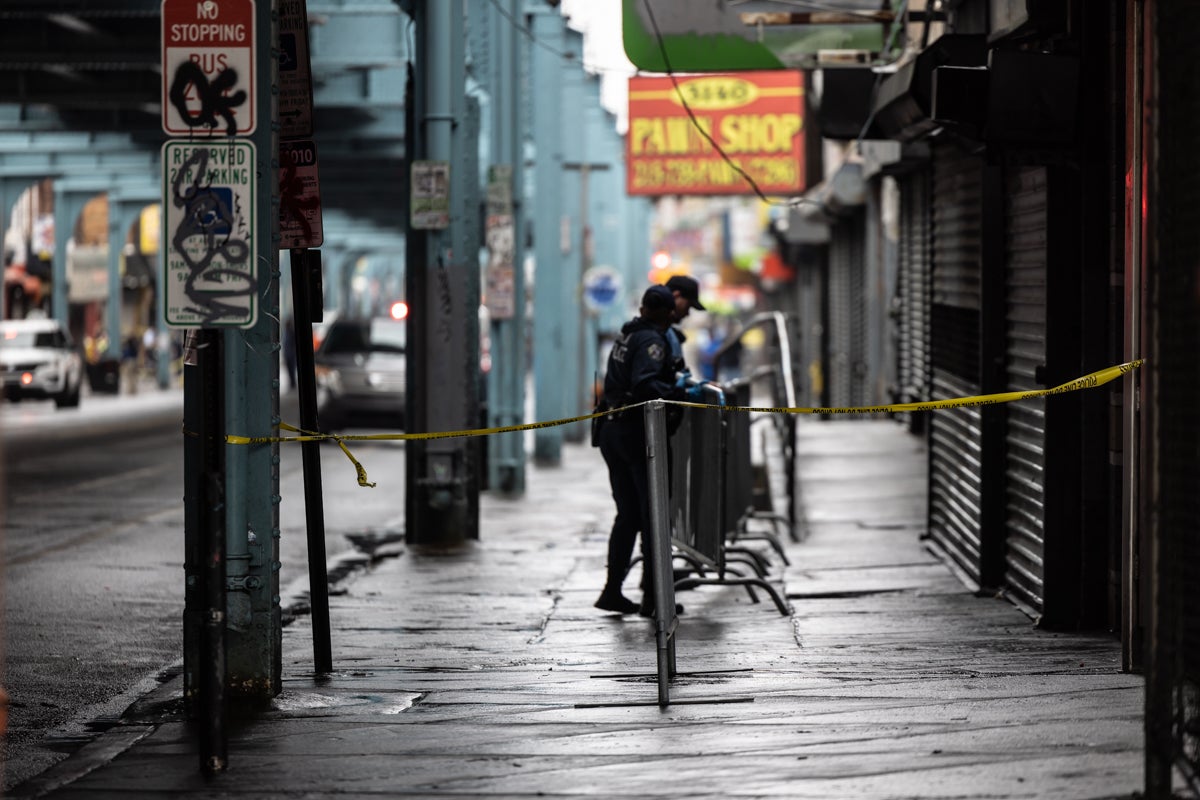
Over the years, the city has enacted encampment clearings, also referred to as resolutions, about 25 times — among those, 10 have occurred in Kensington.
Police and city workers started moving people off the sidewalks around 7 a.m. Officials said they suspect many people had already left the area the night before.
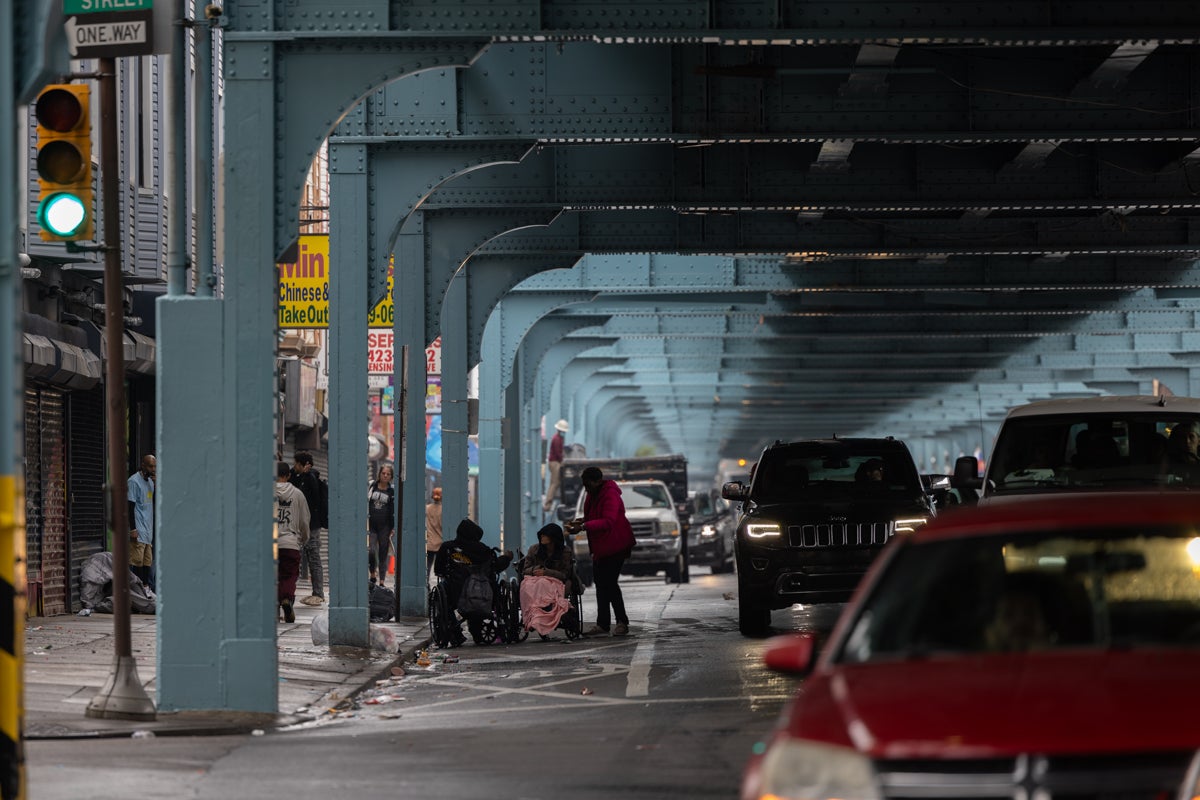
Some people were later seen entering vans marked with organizations and city agencies that offer addiction treatment, medical care or homeless services.
No arrests were made related to the encampment activity, city officials said.
As of Wednesday afternoon, about 59 people in the immediate area had entered shelter and/or addiction treatment programs after they were approached by outreach workers, according to city data.
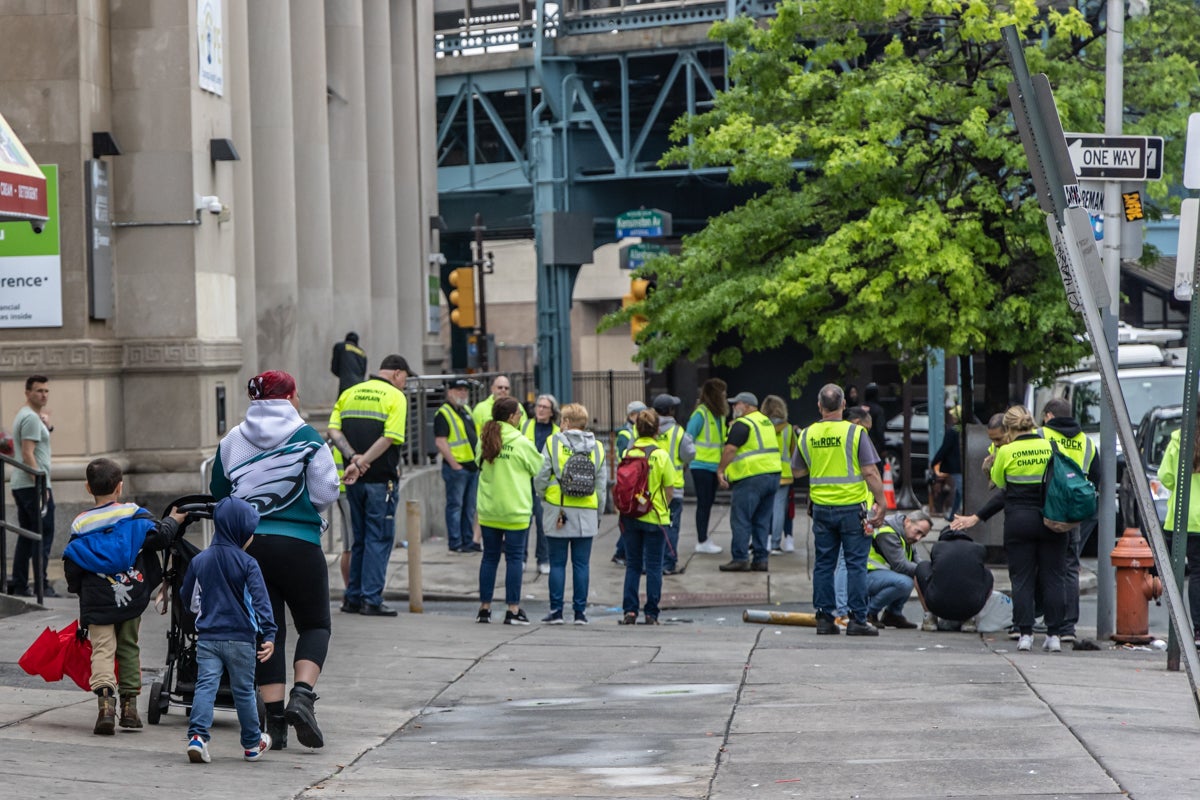
That includes more than 28 people who were approached on the street and connected to services in the past four weeks as city workers looked to connect people to services ahead of the encampment clearing.
“Wherever they are in terms of inpatient [care] or whatever it is, they are not here on the cold street in the torrential downpour,” said Adam Geer, Philadelphia’s chief public safety director. “So, I think that’s a tremendous success and a credit to the hard work they [outreach workers] are doing.”
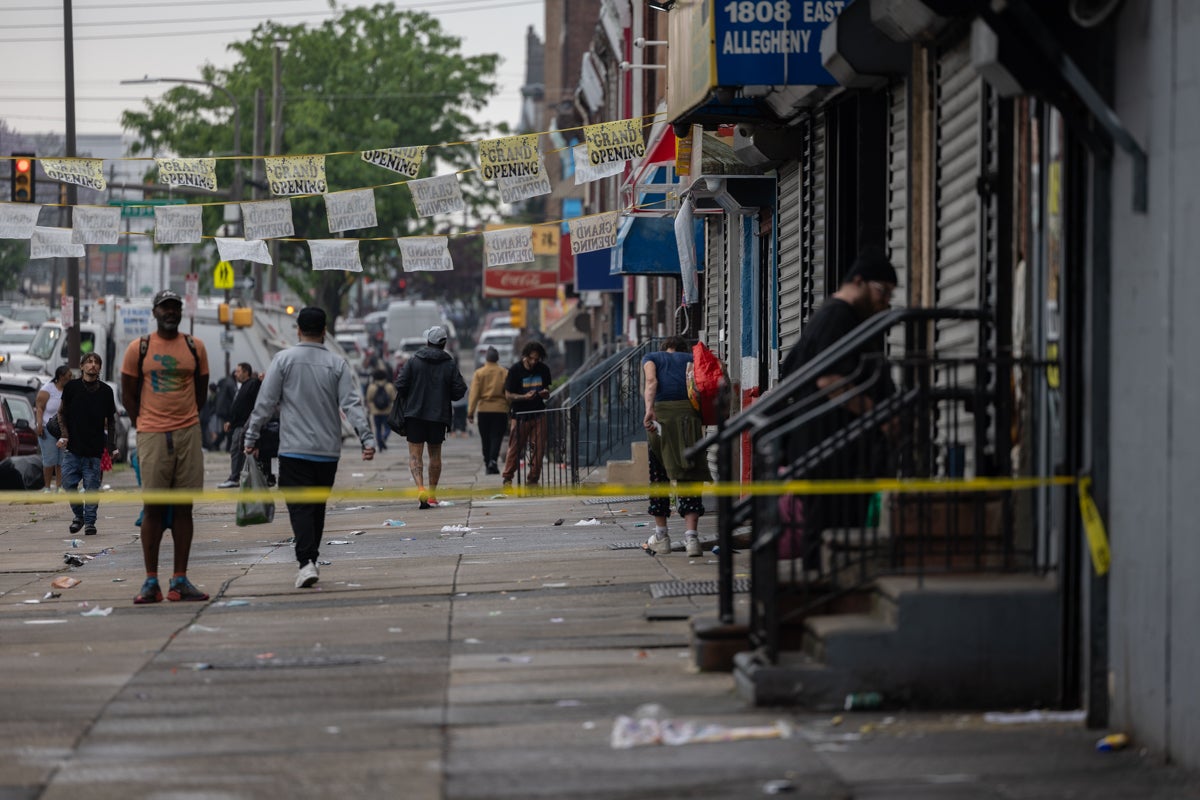
But a larger number of people just moved one or two blocks off Kensington Avenue carrying suitcases, fold-up chairs or pieces of tents with them. Some people stopped against buildings or houses on side streets to inject or smoke drugs. Others sat on stoops in doorways to rest or wait out the police activity going on down the street.
At one end of the barricades on Kensington Avenue near East Orleans Street, people stood under a tent next to police tape and waited to enter the blocked off zone in order to make appointments for addiction treatment at Courage Medicine.
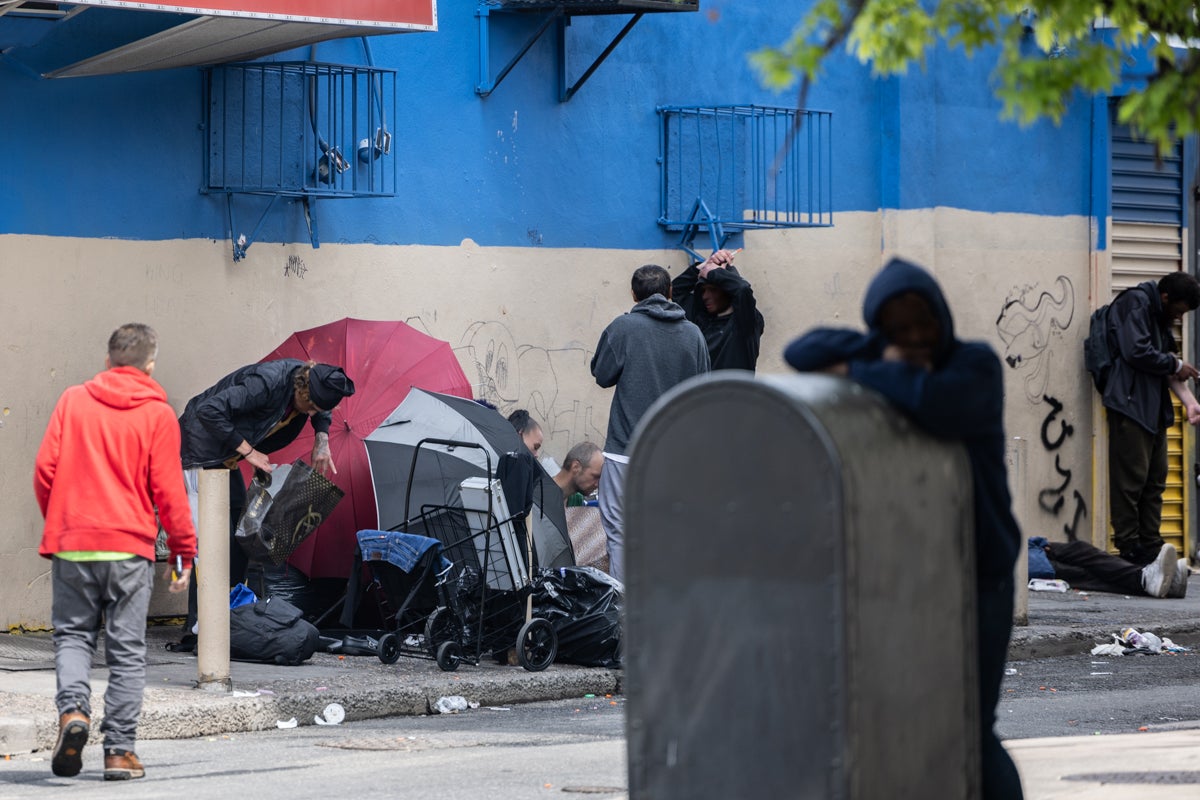
Psychologist Kevin Moore, Courage Medicine’s executive director, said the clinic had warned their clients and patients of the scheduled encampment clearing, but he was surprised to find the area blocked off from foot and street traffic Wednesday morning.
“We have 50 patients that we are expecting in our clinic today,” he said. “We have been allowed to escort them from the tent to our clinic about 200 feet, 300 feet away. So, that’s the situation.”
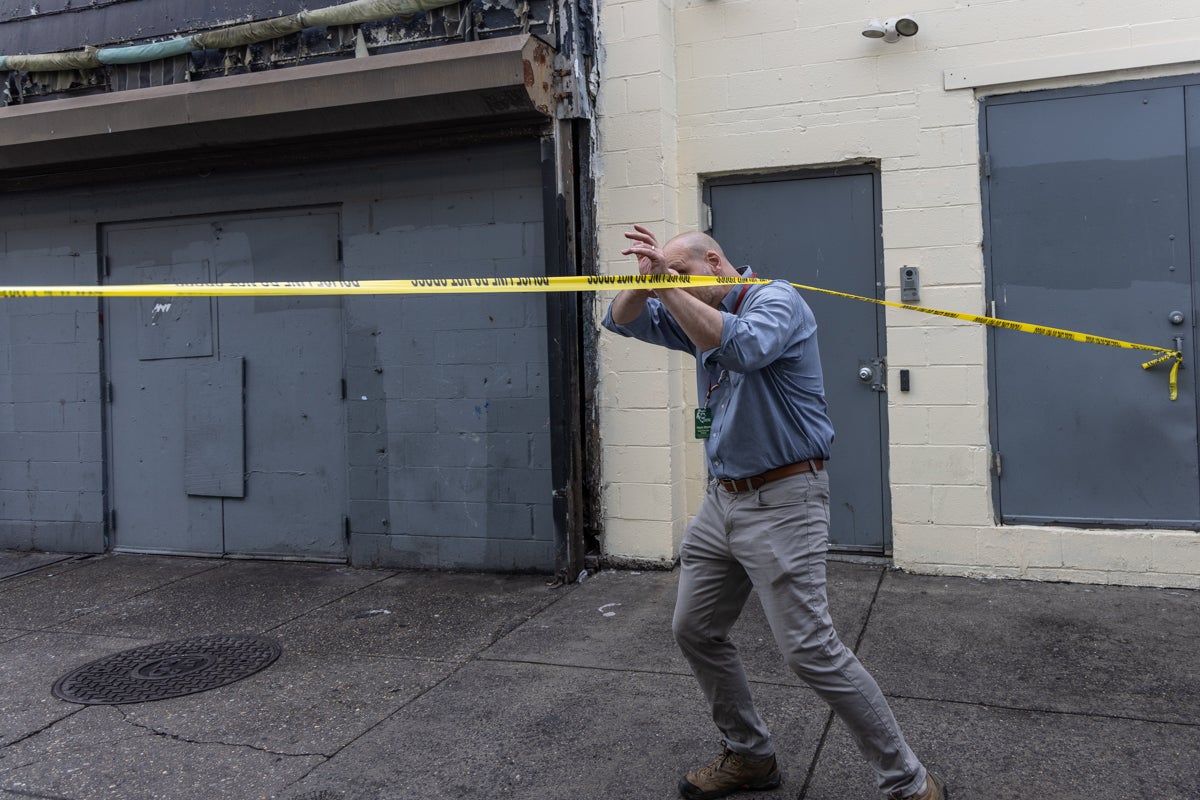
Moore said many of his clients live in Kensington, but if the encampment clearing and shelter placements cause people to move farther away, it could be more difficult for them to access medical and addiction treatment services.
“We also have other locations so people can get to us at other access points, but this is where most of our folks are and most of them are unhoused,” he said. “It will be a disruption to them if they’re not in their normal place to go to their normal clinic.”
Along F Street, Hector Ayala walked down near McPherson Square and up to the police tape on Kensington Avenue to check in on the encampment clearing and activity.
As the CEO of Hispanic Community Counseling Services, a local outpatient behavioral and mental health services organization, Ayala said he sees a shared trauma in the community and a great need for these types of services.
Ayala said he’s encouraged by the city’s attention and focus on Kensington and the Parker administration’s willingness to take action. But he said a long-term plan is needed to make a true impact.
“In order to create any kind of change, you have to create a sense of safety, which the community has not had for many, many years. So, that’s the first step in order to start addressing the other issues and challenges, systematic challenges, that we have here in the community,” Ayala said.
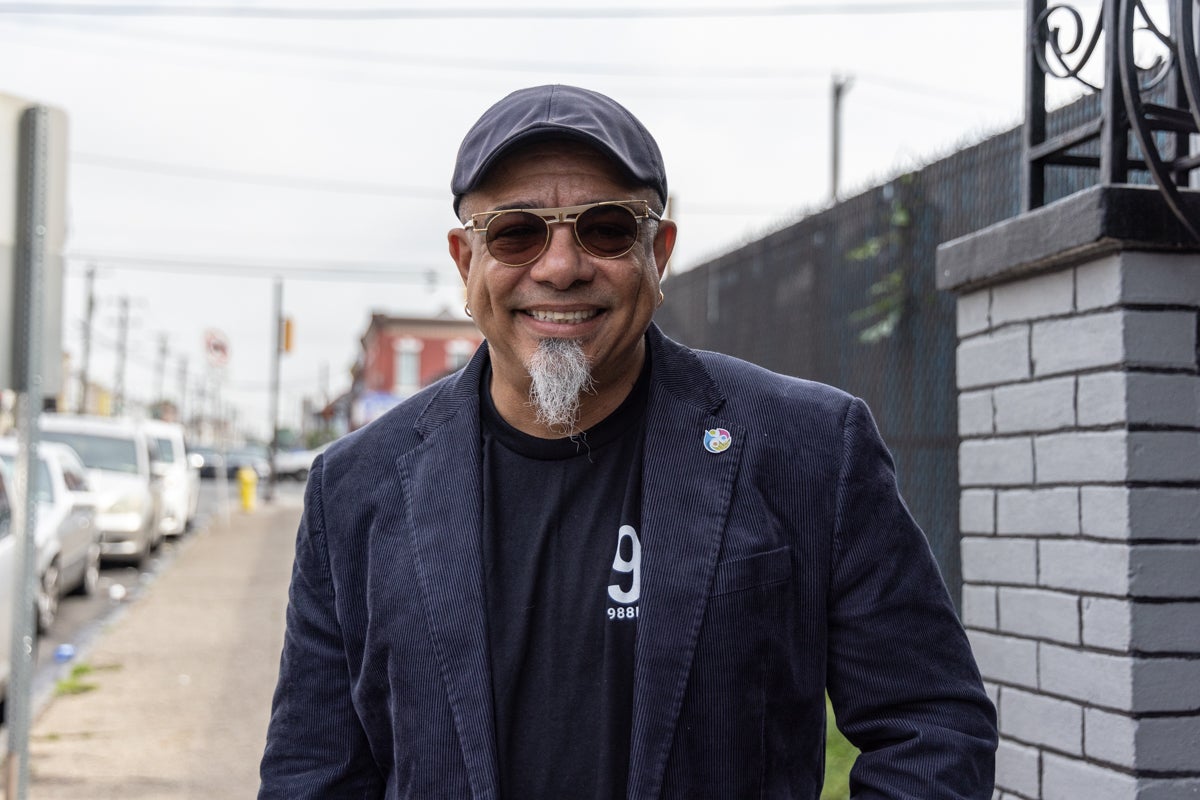
During a town hall meeting hosted at Rock Ministries in Kensington on Tuesday night, Parker said the main goal of the encampment clearing and resolution was not to put people in jail, but rather connect more people to treatment and social services.
Parker’s long-term plan includes tracking open and available treatment beds across the city, opening new triage centers for addiction medicine, housing and other social services, and strictly enforcing drug laws and other offenses.
The mayor stressed that the city does not have all the details figured out yet, but is working on it.
“The plan won’t be perfect,” Parker said Tuesday night. “We don’t have every T crossed and every I dotted. I’m building the plane while I’m flying it at the same time.”
Meanwhile, harm reduction workers in Kensington said they’re working to get overdose reversal medication and other supplies to people who’ve scattered or become displaced across the city.
City officials said outreach workers will offer ongoing connections to social services in the area. They said an increased police presence will remain near the intersection of Kensington and Allegheny avenues to ensure that tents and structures do not reappear along the street.
Police warned that people will be arrested if they return and engage in drug-related activities.

Get daily updates from WHYY News!
WHYY is your source for fact-based, in-depth journalism and information. As a nonprofit organization, we rely on financial support from readers like you. Please give today.


